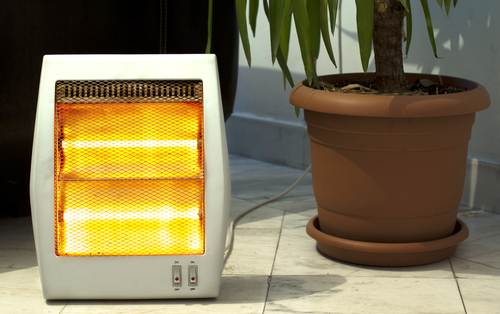 |
Consider also that many of your workers may be taking time off around the holidays with homes full of out-of-town guests and/or children home from school and college. These extra folks may be using rooms that are not usually heated, such as attic or basement spaces. And they may be using portable space heaters to keep warm.
During the cold winter months, heating-related safety is of utmost concern. Here are general safety guidelines from the North Dakota Fire Marshal Division to help keep your workers, their families, and your facility safe.
Electric heaters
- Check that electric heaters have the UL® approval label and an automatic safety switch that turns off the appliance if it is tipped over.
- Be sure to examine cords before plugging in the heater, and if the cords are frayed, worn, or broken, do not use the heater. Either replace the heater or have an electrician replace the cord. Just putting tape on the cord is not enough to prevent overheating and fire.
- Never use extension cords with portable heaters. Using a small, ordinary utility extension cord with a portable heater will cause the cord to overheat and burn.
- Keep all materials that can burn at least 36 inches away from the unit.
What is the most effective and cost-efficient way to provide safety training for your workforce? Try a demo of BLR’s remarkable TrainingToday® at no cost or obligation.
Kerosene heaters
Many kerosene heater-related fires are attributed to the misuse or abuse of the device.
- Purchase a heater that carries the UL label, which means it has been tested for safety.
- Be sure the heater has an automatic safety switch to shut it off if it should tip over. An automatic starter eliminates the need for matches and makes for safer starts.
- A safety grill on the front can prevent accidental contact burns.
- Follow the manufacturer’s instructions for assembly.
- A fuel gauge will help prevent overfilling of the heater.
- Use only crystal-clear1K kerosene; never use colored or contaminated kerosene or any other fuel.
- Always fill the heater outdoors.
- Store kerosene outside in a clearly marked metal container with a tight-fitting lid.
- When using a kerosene heater, be sure the room is well ventilated. Opening a door to an adjoining room or area may be enough. Better yet, open a window in the room slightly.
Note: Keep any heater at least 3 feet away (36 inches) from anything that might burn, including clothing, papers, scrap, etc.
Try a demo of BLR’s remarkable award-winning TrainingToday® at no cost or obligation. This includes the Workplace Safety Library. Get the details.
Remember that a portable heater will not heat an entire room, so don’t try to get a small device to do a big job. For best results, direct the heat from a portable heater to where you want it. Focus the heat where you need it, but not so close it can cause fires or burns.
